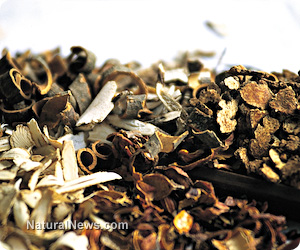
Tuesday, September 17, 2013 by: Cody L
(NaturalNews) Many people feel as if exercise is causing unhealthy damage. The sensation of aversion to exercise and the eventual mental and physical fatigue are known and perhaps feared. Fortunately, a combination of Western science and ancient medicine has potentially given each of us the opportunity to train like Olympians while protecting our organs at the same time. Recent research from a dozen journals all point to a class of compounds called 'adaptogens' which occur in the form of phytochemicals distributed throughout the plant parts of certain plant species, primarily centered in Asia where their utilty in hot water extractions pre-date Western written history.
What does excessive physical activity or swim stress do?
The adrenal glucocorticoid hormones cortisol and corticosterone elevate and activate the hypothalamic pituitary axis and corticotrophin-releasing factor in the hypothalamus.
1. Chronic mild stress increased corticotrophin-releasing factor expression levels and decreased glucocorticoid receptor and serotonin 1a receptor in the hippocampus and frontal cortex.
2. Swim stress increased rapidly the phosphorylation of the Mitogen-Activated Protein Kinase 2K and 2K4 in the neocortex, prefrontal cortex, hippocampus, striatum and amygdala.
3. Cyclic adenosine monophosphate-response element-binding protein (CREB) is induced and elevates an endogenous opioid, dynorphin, in the caudate putamen and the nucleus accumbens.
4. Increase in a catecholamine-synthesizing enzyme, tyrosine hydroxylase, occurs in the locus coeruleus and brain-derived neurotrophic factor, a neurotrophin, decreases in the hippocampus. Too much tyrosine hydroxylase expression wears down neuropeptide Y1 receptor's control over catecholamines. One catecholamine is norepinephrine acting through adrenergic receptors, and acute stress leads to a long lasting decrease in it's secretion.
5. In Special-Forces soldiers, neuropeptide Y maintained after stressful conditions was a marker for resiliency, showing that it won out over the L-tyrosine stress compounds (norepinephrine, dynorphin). Neuropeptide receptor Y1 and Y5, by receiving the antidepressant neuropeptide Y may likewise be preventing Melanocortin-4 receptor from receiving the depressant alpha-melanocyte-stimulating-hormone.
6. Physical activity below the threshold of stressful damage raises neuropeptide Y messenger RNA levels and histone 3 acetylation in the hippocampus and lowers of histone deacetylase 5, allowing myocyte-enhancing factor 5 to elevate in muscle tissues.
Sounds complicated but works very simply
Scientists believe these adaptogenic phytochemicals may be acting on known signal transduction cascades in cellular signaling, with a specific focus on hormones and neuropeptides in the brain and kidneys. For decades, research groups have been establishing paradigms for the testing of stress responses in rodents as an analogue mammal for the purpose of gaining inferences to human
Learn more: http://www.naturalnews.co...






